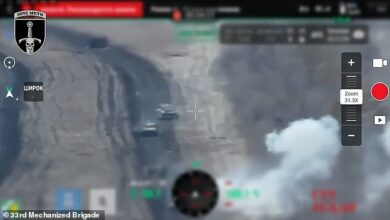Only 20% of Harvard students passed this three-question IQ test…how will YOU do?

The world’s shortest IQ test not only shows your intelligence, but also your patience.
The test, also called the Cognitive Reflection Test (CRT), consists of three mathematical questions that target the person’s ability to ignore their initial gut feeling in favor of a more rational thought process.
Many people are quick to think the answers are simple, but the Yale University professor who developed the exam warned that it is not as simple as it seems.
Professor Shane Frederick founded the CRT in 2005 and only 20 to 40 percent of students who take it pass.

A Yale University professor has designed a cognitive reflection test (CRT) that consists of three mathematical questions aimed at testing a person’s ability to ignore their initial gut feeling in favor of a more rational thought process.
Mathematical brain games are useful in helping people think logically by stimulating the brain and developing visual and spatial reasoning skills.
A CRT measures a person’s cognitive ability by assessing whether he or she can suppress spontaneous responses that ultimately turn out to be incorrect and replace them with deliberate and conscious responses.
The first question is: ‘A bat and a ball together cost $1.10. The bat costs $1 more than the ball. How much does the ball cost?’
Frederick said that 10 cents would be the most obvious choice, but that is not correct.
The reason? The difference between $1 and ten cents is 90 cents. While the difference between $1.05 and 5 cents is one dollar, which meets the parameters of the question.
The professor conducted a study among 3,428 people who had to solve a short IQ test.
He found that those who answered 10 cents were significantly less patient than those who gave the correct answer. IFLScience reported.
The second question is: ‘If it takes 5 machines 5 minutes to make 5 widgets, how long does it take 100 machines to make 100 widgets?’
If you answered 100 minutes, you are wrong again: the answer is five minutes.
The most obvious conclusion is that it takes 100 machines 100 minutes to make 100 widgets.
But if each machine takes five minutes, it still only takes five minutes per machine, even if you scale the number to 100.
The third question is: ‘In a lake there is a field of water lilies. Every day the field doubles in size.
‘If it takes 48 days to cover the entire lake, how long will it take to cover half the lake?’
Of the 3,000+ people who took the test, the majority gave the wrong answer of 24 days. That seems logical at first glance, because people instinctively want to halve the number of days.
According to Frederick, the answer is 47. Because if the piece of land doubles every day and reaches the full size of the pond, this means that the day before it was only half the size.
Although the test is meant to determine your IQ, don’t feel bad if you get all or most of the questions wrong. Students from the most prestigious schools in the country scored poorly.
Only 20 percent of Harvard University students answered all questions correctly, while 26 percent of Princeton University students and 48 percent of MIT students got all three answers correct.




